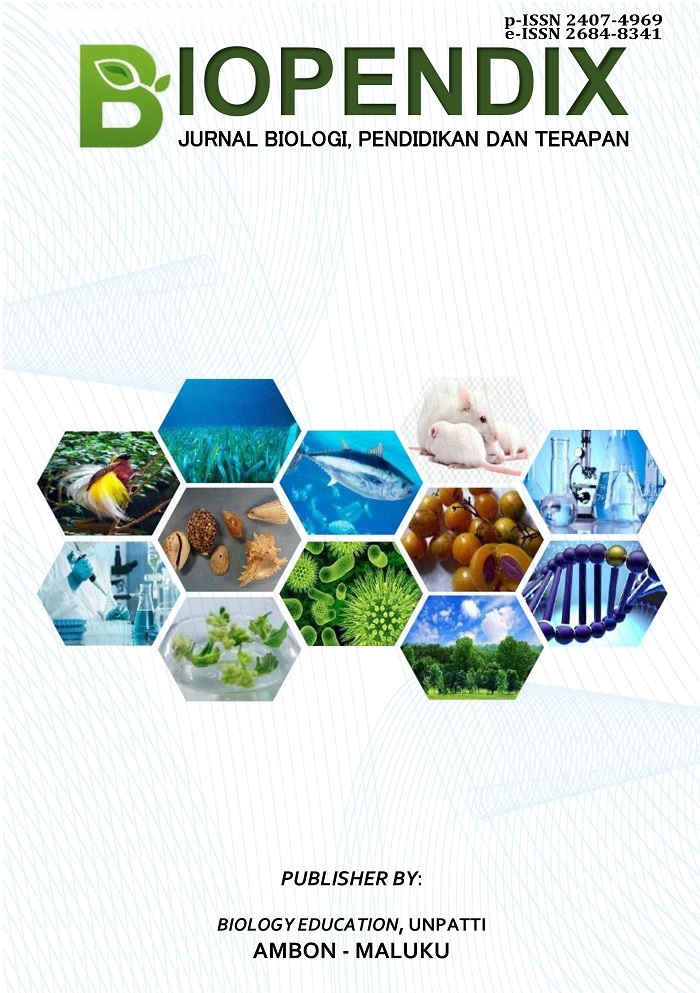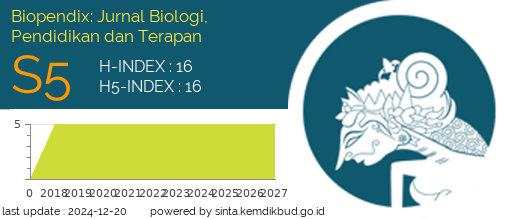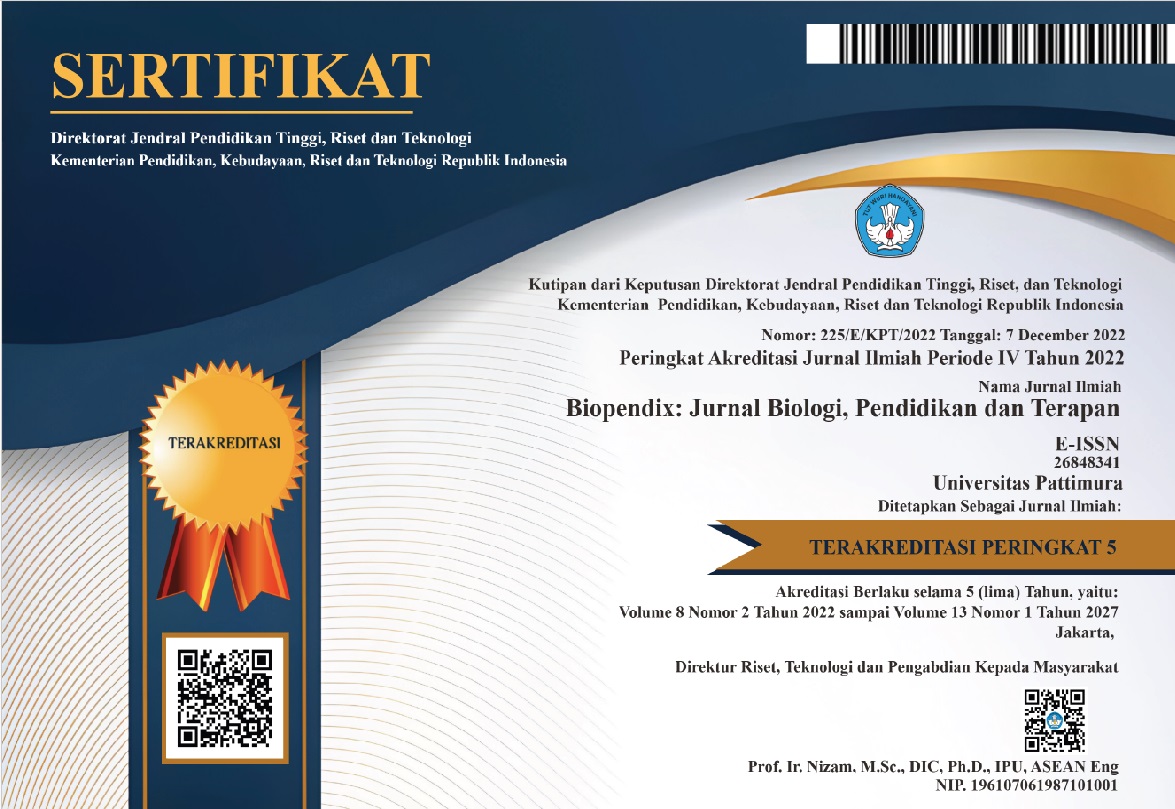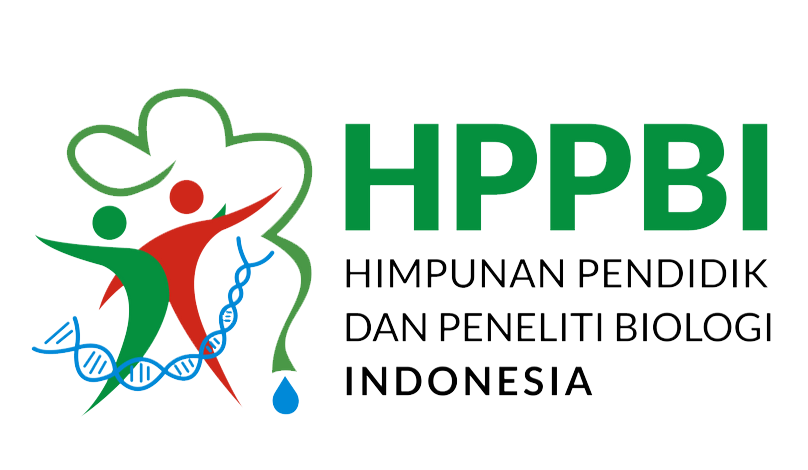Phytoestrogenic Activity of Fresh Bitter Melon (Momordica charantia L.) Fruit Extract on Ovarian Folliculogenesis in Female Mice
Abstract
Momordica charantia L., commonly known as bitter melon, is a medicinal plant that contains various bioactive compounds such as flavonoids, saponins, tannins, triterpenoids, and alkaloids. These compounds have potential antifertility properties. This study aimed to evaluate the potential of bitter melon extract as an antifertility agent in female animals. A total of 18 female mice (Mus musculus L.) were divided into three groups: a control group (K0), treatment group 1 (P1) received 5% bitter melon extract, and treatment group 2 (P2) received 10% extract. The mice (Mus musculus L.) were orally administered the extract for 16 consecutive days using the gavage method. On the final day of treatment, the mice were dissected to isolate the ovaries. The ovaries were weighed and processed for histological examination using the paraffin method and Hematoxylin-Eosin staining. The observed parameters included the number of primary, secondary, tertiary, and Graafian follicles. Data were analyzed using one-way analysis of variance (ANOVA) followed by Duncan’s post hoc test to determine statistical differences among groups. The results showed that administration of 5% bitter melon extract significantly increased the number of primary and secondary follicles. However, at the 10% concentration, a reduction was observed in the number of all follicle types, including Graafian follicles. These findings indicate that low-dose bitter melon extract may promote ovarian follicle development, whereas high-dose administration exhibits antifertility potential through a phytoestrogen mechanism that inhibits follicular maturation.
Downloads
References
Ahmed, S., Li, Q., Liu, L., & Tsui, A. O. (2012). Maternal deaths averted by contraceptive use: An analysis of 172 countries. The Lancet, 380(9837), 111–125. https://doi.org/10.1016/S0140-6736(12)60478-4
Aydin, G., & Kaya, E. (2020). A Review: Momordica charantia L.’s Biological Active Components and Its Potential Use in Traditional Therapies. 1(2), 79–95.
Badan Pusat Statistik. (2019). Hasil Sensus Penduduk (SP2020) pada September 2020 mencatat jumlah penduduk sebesar 270,20 juta jiwa. Bps.Go.Id, 27, 1–52.
Cevik, O., Akpinar, H., Oba, R., Cilingir, O. T., Ozdemir, Z. N., Cetinel, S., & Yoldemir, T. (2015). The effect of Momordica charantia intake on the estrogen receptors ESRα/ESRβ gene levels and apoptosis on uterine tissue in ovariectomy rats. Molecular Biology Reports, 42(1), 167–177. https://doi.org/10.1007/s11033-014-3756-7
Cholifah, S., Arsyad, A., & Salni, S. (2014). Pengaruh Pemberian Ekstrak Pare (Momordica charantia L.) terhadap Struktur Histologi Testis dan Epididimis Tikus Jantan (Rattus novergicus) Spraque Dawley®. Majalah Kedokteran Sriwijaya, 46(2), 149–157.
Cushman, R. A., Hedgpeth, V. S., Echternkamp, S. E., & Britt, J. H. (2000). Evaluation of numbers of microscopic and macroscopic follicles in cattle selected for twinning. Journal of Animal Science, 78(6), 1564–1567. https://doi.org/10.2527/2000.7861564x
Dekrismar, O. P. K., Gaina, C. D., & Amalo, F. A. (2022). Literature Study of Histological Structure of Female Pig. Jurnal Veteriner Nusantara, 5(21), 1–13.
Erickson, G. F. (2009). Follicle Growth and Development. The Global Library of Women’s Medicine, 1–25. https://doi.org/10.3843/glowm.10289
Frans, S., & Djasri, H. (2023). Reducing Unmet Need for Family Planning in Indonesia: A Policy Analysis Report. Jurnal Kebijakan Kesehatan Indonesia, 12(4), 224. https://doi.org/10.22146/jkki.89933
Husna, P. A. U., Kairupan, C. F., & Lintong, P. M. (2022). Tinjauan Mengenai Manfaat Flavonoid pada Tumbuhan Obat Sebagai Antioksidan dan Antiinflamasi. EBiomedik, 10(1), 76–83.
Ifeanyi, A. C., Eboetse, Y. O., Ikechukwu, D. F., Adewale, O. A., Carmel, N. C., & Olugbenga, O. A. (2011). Effect of Momordica Charantia on Estrous Cycle of Sprague-Dawley Rats Amah. Pacific Journal of Medical Sciences, 8(1), 38–48.
Jefferson, W. N. (2010). Adult ovarian function can be affected by high levels of soy. Journal of Nutrition, 140(12), 2322–2325. https://doi.org/10.3945/jn.110.123802
Kangawa, A., Otake, M., Enya, S., Yoshida, T., & Shibata, M. (2017). Normal Developmental and Estrous Cycle-dependent Histological Features of the Female Reproductive Organs in Microminipigs. Toxicologic Pathology, 45(4), 551–573. https://doi.org/10.1177/0192623317710012
Kiyama, R. (2023). Estrogenic flavonoids and their molecular mechanisms of action. Journal of Nutritional Biochemistry, 114, 1–48. https://doi.org/10.1016/j.jnutbio.2022.109250
McGee, E. A., & Hsueh, A. J. W. (2000). Initial and cyclic recruitment of ovarian follicles. Endocrine Reviews, 21(2), 200–214. https://doi.org/10.1210/er.21.2.200
Mescher, A. L. (2018). Junqueira’s Basic Histology _ Text and Atlas, 15th Edition. In McGraw-Hill Education.
Narulita, E., Prihatin, J., Anam, K., & Oktavia, F. A. R. H. (2017). Perubahan Kadar Estradiol dan Histologi Uterus Mencit (Mus musculus) Betina dengan Induksi Progesteron Sintetik. Biosfera, 34(3), 117. https://doi.org/10.20884/1.mib.2017.34.3.487
Nuradiah, M. F., Merta, I. W. M., & Kusmiyati, K. (2023). The Effect of Tapak Dara (Catharanthus roseus) Leaf Extract on The Growth of Mice (Mus Musculus) Ovarian Follicles. Jurnal Biologi Tropis, 23(4), 337–344. https://doi.org/10.29303/jbt.v23i4.5552
Patil, S. (2020). Studies of dietary phytoestrogen from momordica charantia Linn. Seeds. International Journal of Medical and Surgical Sciences, 26–33. https://doi.org/10.32457/ijmss.v7i1.469
Rezady, G. M. H., Plumeriastuti, H., & Rimayanti. (2019). Influence of Pare Leaves Extract (Momordica Charantia) on Folicles Ovary in Rat (Rattus Norvegicus) Due to The Effect of Hyperglylemic Condition. OVOZOA : Journal of Animal Reproduction, 8(1), 61–65.
Satyaningtijas, A. S., Maheshwari, H., Achmadi, P., Pribadi, W. A., Hapsari, S., Jondriatno, D., Bustaman, I., & Kiranadi, B. (2014). Reproduction Performance of Pregnant Rat Administered with Ethanolic extract of Purwoceng (Pimpinella alpina). 8(1), 35–37.
Suhaimi, N. N., Waras, M. N., & Ansor, N. M. (2023). Association between Phytoestrogen Consumption and Female Reproductive Health: A Systematic Review of Experimental Models. Ibnosina Journal of Medicine and Biomedical Sciences, 15(04), 152–160. https://doi.org/10.1055/s-0043-1775583
Whitten, P. L., & Patisaul, H. B. (2001). Cross-species and interassay comparisons of phytoestrogen action. Environmental Health Perspectives, 109(1), 5–20. https://doi.org/10.1289/ehp.01109s15
Zin, S. R., Omar, S. Z., Ali Khan, N. L., Musameh, N. I., Das, S., & Kassim, N. M. (2013). Effects of the phytoestrogen genistein on the development of the reproductive system of Sprague Dawley rats. Clinics, 68(2), 253–262. https://doi.org/10.6061/clinics/2013(02)OA21
Copyright (c) 2025 Rasyida Ulfa, Nabilah Putroe Agung, Rizky Fitriana, Ali Makmur, Nabila Latifa Hafizsha

This work is licensed under a Creative Commons Attribution-ShareAlike 4.0 International License.
Authors who publish with this Journal agree to the following terms:
- Author retain copyright and grant the journal right of first publication with the work simultaneously licensed under a creative commons attribution license that allow others to share the work within an acknowledgement of the work’s authorship and initial publication of this journal.
- Authors are able to enter into separate, additional contractual arrangement for the non-exclusive distribution of the journal’s published version of the work (e.g. acknowledgement of its initial publication in this journal).
- Authors are permitted and encouraged to post their work online (e.g. in institutional repositories or on their websites) prior to and during the submission process, as it can lead to productive exchanges, as well as earlier and greater citation of published works





 2
2






